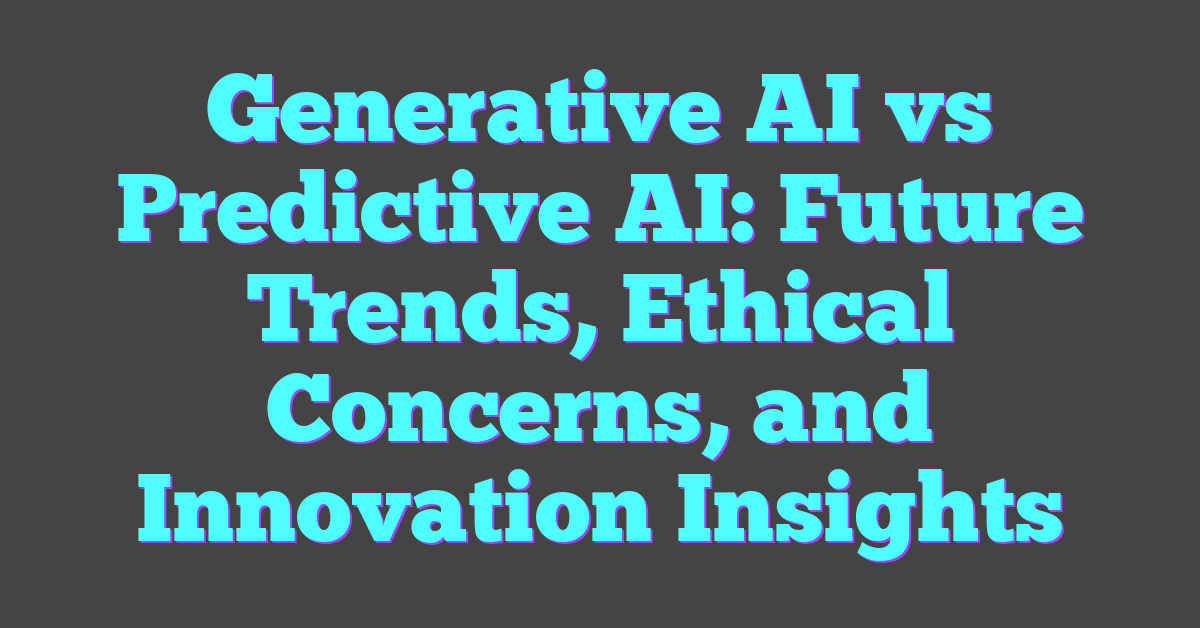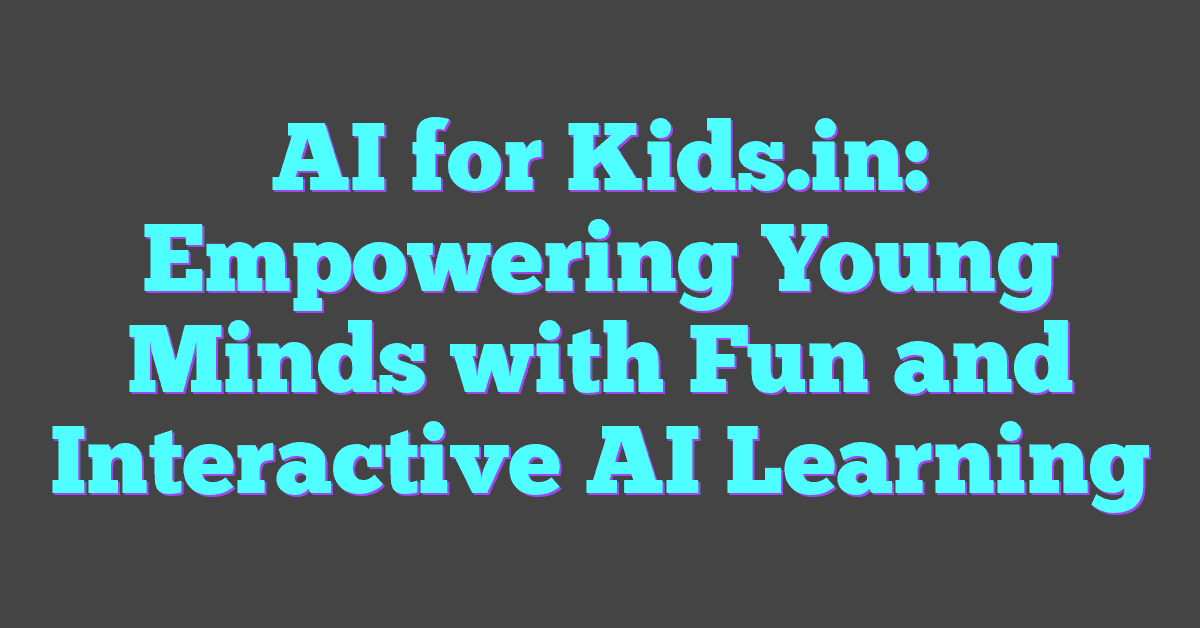Artificial Intelligence (AI) is reshaping our world, but not all AI is created equal. Two of the most fascinating branches are generative AI and predictive AI. While both aim to enhance human capabilities, they do so in intriguingly different ways.
Generative AI focuses on creating new content, whether that’s text, images, or even music. It’s like having a digital artist or writer at your fingertips. Predictive AI, on the other hand, is all about forecasting future events based on historical data. Think of it as your personal crystal ball, helping you make informed decisions.
Understanding the differences between these two can help you leverage their unique strengths in various applications. Whether you’re a tech enthusiast or a business leader, grasping these concepts can open up new possibilities for innovation and efficiency.
Understanding Generative AI
Generative AI, unlike its predictive counterpart, specializes in crafting new data. It generates text, images, sounds, or other media, expanding creative horizons by producing original content.
What Is Generative AI?
Generative AI refers to systems that can create new content similar to training data. These AI models produce new pieces based on learned patterns, rather than merely analyzing historical data. For example, OpenAI’s GPT-3 generates human-like text, while DALL-E creates novel images from textual descriptions.
Key Technologies Behind Generative AI
Generative AI relies on several advanced technologies:
- Neural Networks: These networks simulate human brain functions, enabling AI to recognize and reproduce complex patterns in data. Convolutional Neural Networks (CNNs) and Recurrent Neural Networks (RNNs) are key architectures.
- Generative Adversarial Networks (GANs): GANs consist of two neural networks, the generator and the discriminator, which compete to produce increasingly accurate data replicas. GANs are effective in creating realistic images and videos.
- Autoencoders: These models encode input data into compressed representations and then decode it into outputs. Variational Autoencoders (VAEs) are a subtype used for generating diverse, high-quality synthetic data.
- Transformers: These architectures handle sequence data by leveraging self-attention mechanisms, making them adept at generating coherent text and translation tasks.
The combination of these technologies drives generative AI’s ability to innovate across content-creating fields. This capability expands how AI can be applied creatively.
Exploring Predictive AI
Predictive AI leverages historical data to forecast future events. It’s widely used in industries such as finance, healthcare, and retail to make informed decisions.
What Is Predictive AI?
Predictive AI analyzes patterns in existing data to make predictions about future outcomes. It relies on statistical models and machine learning algorithms to extract insights and forecast trends. For example, in finance, predictive AI models might forecast stock prices or assess credit risk.
Core Algorithms of Predictive AI
Several core algorithms power predictive AI, each suited for different tasks:
- Linear Regression: Predicts a dependent variable based on one or more independent variables. Common in finance for predicting stock trends.
- Decision Trees: Splits data into branches to predict outcomes. Often used in healthcare for diagnosing diseases.
- Random Forests: Combines multiple decision trees to improve accuracy. Effective in various fields like retail for demand forecasting.
- Neural Networks: Mimics the human brain to uncover complex patterns. Useful in areas like image recognition and natural language processing.
- Support Vector Machines (SVM): Classifies data into different categories with maximum margin separation. Widely used in text classification and image recognition.
These algorithms enhance the accuracy and reliability of predictions, enabling businesses to make data-driven decisions.
Generative AI vs Predictive AI
Generative AI and Predictive AI serve distinct purposes within the artificial intelligence landscape. While generative AI focuses on creating new content, predictive AI aims to forecast future events using historical data.
Fundamental Differences
Generative AI creates novel content by understanding patterns in input data and generating similar, yet unique, outputs. Techniques like Generative Adversarial Networks (GANs) and Variational Autoencoders (VAEs) exemplify this approach. In contrast, predictive AI uses algorithms to analyze historical data and predict future trends or events. Key algorithms here include Linear Regression, Decision Trees, and Neural Networks.
Generative AI excels in tasks like image synthesis and text generation, leveraging models that learn from large datasets to produce new, similar content. On the other hand, predictive AI is adept at identifying patterns to forecast outcomes, making it essential for applications where future predictions drive decision-making.
Applications and Use Cases
Generative AI finds applications in domains requiring content creation. Examples include creating realistic images, virtual environments, and generating human-like text for chatbots. Artists and designers can also use generative AI to explore new creative possibilities.
Predictive AI is critical in sectors like healthcare, finance, and retail. For example, in healthcare, predictive AI analyzes patient data to forecast disease outbreaks or patient readmissions. In finance, it predicts stock price movements and fraud detection. Retailers use predictive AI to forecast demand, optimize inventory, and enhance customer experiences through personalized recommendations.
Overall, generative and predictive AI each play vital roles in advancing artificial intelligence, with unique strengths suited to different applications and objectives. Their complementary nature allows for a broad spectrum of innovations across various industries.
Impact on Industries
Generative AI and predictive AI are reshaping industries by offering unique capabilities tailored to various needs. These technologies are driving innovation and efficiency across several fields.
Transforming Healthcare
Generative AI and predictive AI transform healthcare by enhancing diagnostics, treatment plans, and patient care. Predictive AI utilizes algorithms to analyze historical patient data, enabling early disease detection and personalized treatment plans. For example, AI models predict the likelihood of readmission by examining patient records and lifestyle factors.
Generative AI revolutionizes medical imaging by creating high-quality images from low-resolution scans. Techniques like Generative Adversarial Networks (GANs) improve MRI, CT, and X-ray images, facilitating better diagnoses. Automated report generation assists radiologists by summarizing findings, ultimately reducing workload and increasing accuracy.
Innovations in Finance
The finance industry benefits immensely from generative AI and predictive AI. Predictive AI enhances risk management by forecasting market trends and identifying potential financial threats. Algorithms like Decision Trees and Neural Networks analyze historical market data to predict stock price movements and credit risk.
Generative AI offers unique solutions in portfolio management and fraud detection. AI systems generate trading strategies by simulating market scenarios and testing various investment approaches. Additionally, GANs detect fraudulent transactions by generating synthetic transaction patterns, improving system security.
By incorporating both generative and predictive AI, industries leverage advanced solutions to optimize operations and drive growth.
Future Prospects
Generative AI and predictive AI are poised to transform various sectors in unprecedented ways. Their future prospects hinge on recent trends and the ethical challenges that accompany their development.
Trends in AI Development
The convergence of generative and predictive AI capabilities is driving innovation. In natural language processing (NLP), models like GPT-3 exemplify how generative AI can create human-like text. Meanwhile, predictive AI is enhancing decision-making processes across industries. Autonomous vehicles, for example, rely on predictive algorithms to anticipate driving conditions and generative models for route optimization. The ongoing integration of these AI types is predicted to result in more advanced hybrid systems.
Ethical Considerations and Challenges
As AI technologies evolve, ethical considerations become paramount. One significant issue involves data privacy. Predictive AI systems often require vast amounts of personal data to improve accuracy, posing privacy risks. Additionally, generative AI’s ability to create deepfakes raises concerns about misinformation. Addressing these challenges necessitates clear regulations and robust ethical standards. It’s imperative for stakeholders to collaborate in creating guidelines that ensure AI developments benefit society while minimizing potential harms.
Both generative and predictive AI hold immense potential for future advancements. However, their development must be guided by ethical considerations to ensure a positive trajectory.
Conclusion
Generative AI and predictive AI each offer unique strengths and potential for innovation. As these technologies continue to evolve, their convergence could lead to groundbreaking hybrid systems. However, it’s essential to address ethical challenges and prioritize data privacy to ensure AI advancements benefit society. Collaboration among stakeholders will be key in navigating these complexities and harnessing the full potential of AI. The future looks promising, with the right balance of innovation and responsibility.
Frequently Asked Questions
What is the difference between generative AI and predictive AI?
Generative AI focuses on creating new content such as text, images, or music, while predictive AI aims to forecast future events or behaviors based on data analysis.
How are generative and predictive AI expected to evolve in the future?
Generative and predictive AI are expected to converge, creating advanced hybrid systems that leverage both content creation and accurate forecasting to drive innovation.
What are the primary ethical concerns related to AI development?
The main ethical concerns include data privacy, the potential for misinformation, and the need for robust ethical guidelines to govern AI’s impact on society.
How can ethical challenges be managed in AI development?
Ethical challenges can be managed through collaboration among stakeholders, the creation of comprehensive ethical guidelines, and continuing oversight to ensure AI technologies benefit society positively.
Why is the integration of generative and predictive AI significant?
The integration is significant because it combines the strengths of both technologies, leading to more innovative and effective AI systems that can impact various fields from healthcare to finance.
What role do stakeholders play in the responsible advancement of AI?
Stakeholders, including developers, policymakers, and end-users, must work together to ensure AI is developed and implemented ethically, addressing potential risks and maximizing benefits.





